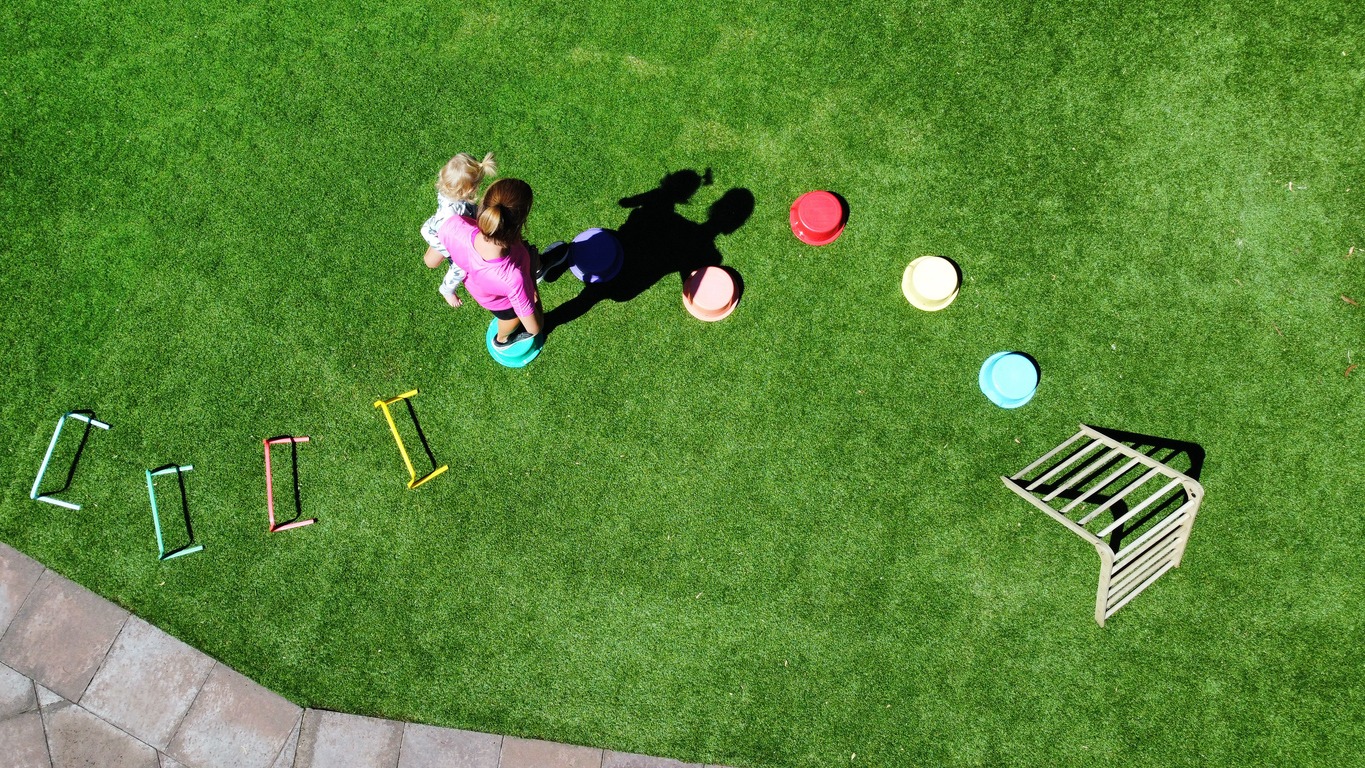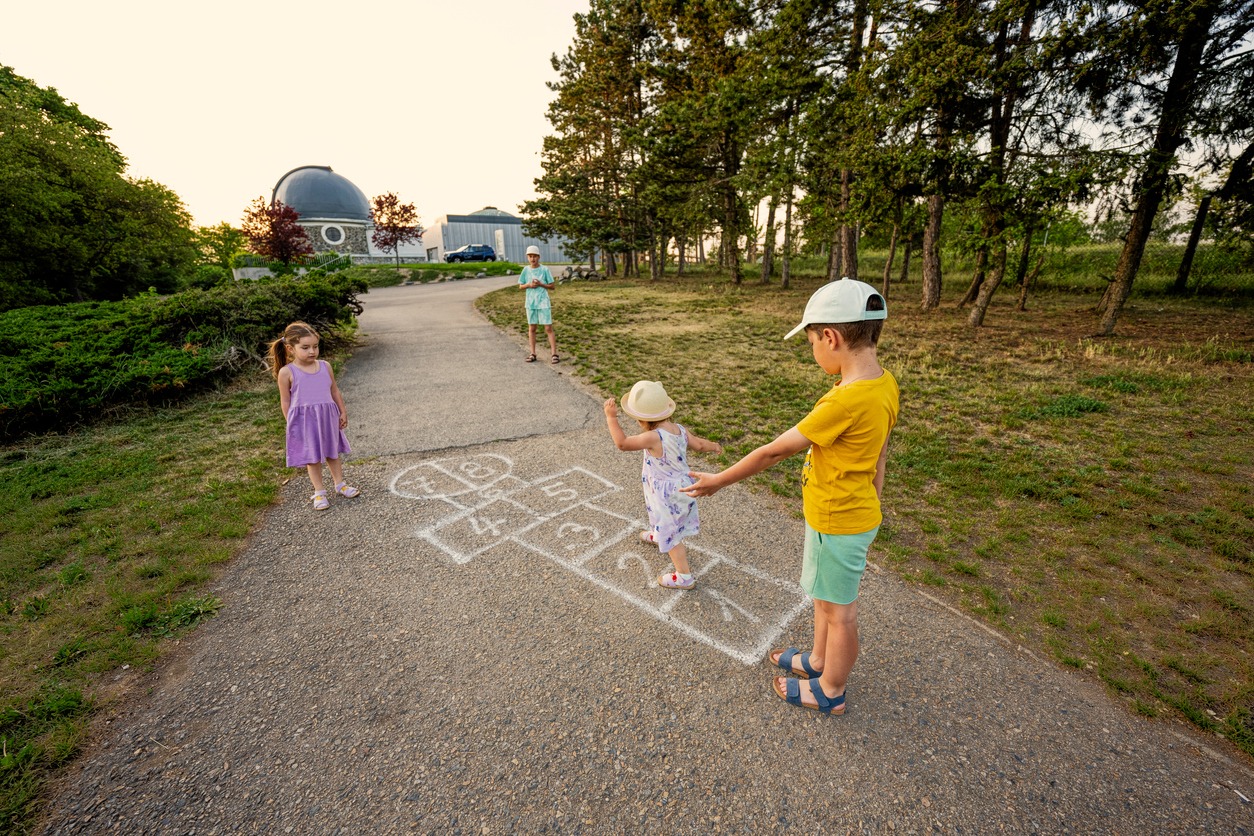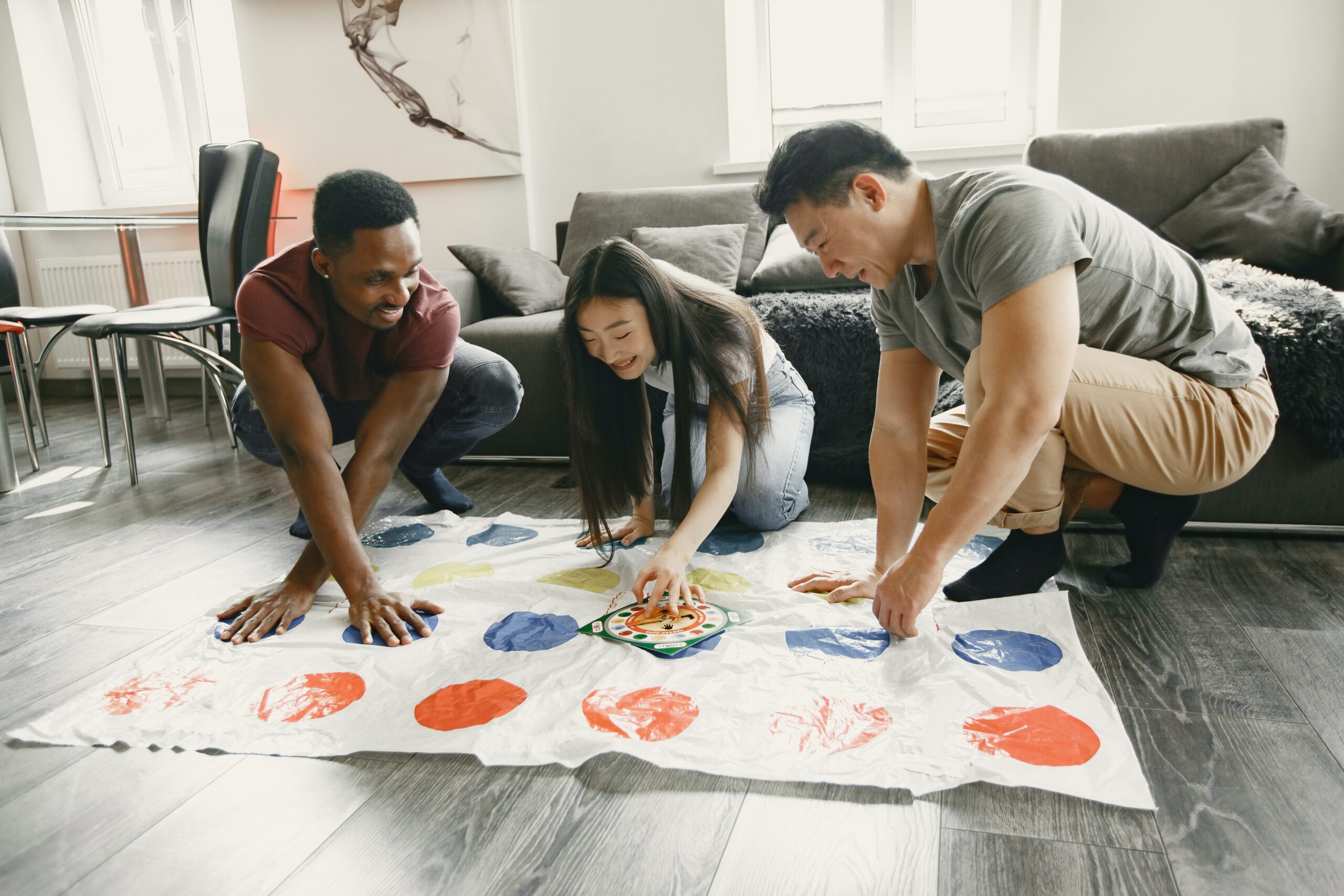Are your kids often bored looking for something new to do? Or are you thinking of fun activities for children on an upcoming kids’ party you’re planning? These games will keep them entertained and make them forget about screens for a while!
Are your kids often bored looking for something new to do? Or are you thinking of fun activities for children at an upcoming kids’ party you’re planning? These games will keep them entertained and make them forget about screens for a while!
1. Obstacle Course
Transform your living room or backyard into a thrilling playground filled with excitement and laughter by making your own obstacle course! It’s a fantastic and exciting game for keeping young children entertained. It engages their physical abilities and enhances their problem-solving skills, coordination, and imagination.
Raid your house for pillows, cushions, hula hoops, and other household items. Arrange them strategically to create a challenging path for your little adventurers to conquer. Place pillows or cushions in a row, creating a tunnel for the kids to crawl through. Add a touch of excitement by hanging a sheet or blanket over two chairs to create a secret passage. They’ll feel like they’re on a top-secret mission!
You can also set up hula hoops or jump ropes on the ground for the children to jump over. Make it even more challenging by placing them at varying heights, so the kids will try to jump higher as they progress through the course. Use a wooden board, a piece of tape on the floor, or even a makeshift beam made of pool noodles and make them balance on it.
Whatever you do, make sure it’s kid-proof for everyone’s safety!
2. Hopscotch
This one’s a time-honored activity for children of all ages. Grab some tape or chalk and create a hopscotch grid on a flat surface. If you’re indoors, use masking tape or painter’s tape to mark the grid on a smooth floor. If you’re outside, grab some chalk and draw the grid on a sidewalk or pavement. Make sure the squares are large enough for hopping and clearly numbered from 1 to 10 or even higher for an added challenge.
Children can take turns hopping through the numbered squares, adding variations like hopping on one foot or skipping specific numbers. You can make it even more fun by assigning silly actions or movements to certain squares. For example, when a player lands on a specific number, they have to spin around, clap their hands, or perform a funny dance move before going on.
3. Twister
Get ready to twist, bend, and stretch with Twister, the game that transforms your living room or backyard into a colorful and uproarious playground. With its iconic mat and unpredictable spins, Twister guarantees hours of entertainment for children of all ages.
Use a Twister mat or create your own by drawing colored circles on the floor with different body part instructions (left hand, right foot, etc.). Spin the spinner and have the children place their hands or feet on the corresponding circles.
Twister is fun for the whole family, and it fosters closeness with one another as they keep on twisting with one another on the board!
4. Simon Says
This classic game of listening and following instructions is a fantastic way to encourage active participation and develop listening skills.
Choose one child to be the leader, and let them take on the role of Simon. Simon will give commands for the other children to follow, but they must listen carefully and only perform the action if Simon says, “Simon says” before the command. For example, if Simon says, “Simon says, clap your hands,” the children clap their hands. But if Simon simply says, “Jump,” the children should not perform the action.
Everyone must closely listen to the command and only carry out the action if Simon includes “Simon says.” The leader can incorporate various movements, gestures, and expressions to make the game more engaging and entertaining. As the game goes on, Simon must increase the speed of the commands to try to catch others off guard. This adds to the challenge and excitement of the game!
5. Indoor Bowling
Transform your living room or any spacious area into a thrilling bowling alley. With a little bit of resourcefulness and creativity, you can set up a DIY bowling alley using empty plastic bottles or cardboard tubes. Create makeshift bowling lanes using painter’s tape or rolled blankets. Use a soft, inflatable ball as a bowling ball and let the kids take turns rolling it to knock down the pins.
Create a fun and engaging atmosphere by adding decorations and theme-related elements to your indoor bowling alley. Use colorful tape or stickers to mark the bowling pins, and place some mini flags or banners around the area to create a festive ambiance. You can even play some upbeat music in the background to amp up the excitement!
6. Balloon Volleyball
Volleyball is a fun sport, but you can use balloons, so you don’t need to worry about heavy balls and accidental collisions. Start by inflating a balloon to a size that is easy for the children to hit and keep in the air. Avoid overinflating the balloon to prevent it from popping too easily.
Set up a “net” by using a string or a low-hanging rope positioned across the playing area. You can tie the ends to sturdy furniture or attach them to walls using adhesive hooks or tape. Make sure the net is at a height suitable for the children to reach comfortably.
Divide the children into teams and have them play volleyball using the balloon as the ball. Have them hit it over the net as long as they can without it falling.
7. Duck, Duck, Goose
This classic and interactive activity is perfect for indoor or outdoor play, providing excitement and friendly competition. Have all the children gather in a circle, sitting on the floor or in chairs. Make sure there is enough space between each child to allow for easy movement.
Explain the rules of the game to the children. Let them know that one person will be the “tagger” and will walk around the outside of the circle, tapping each child’s head gently while saying “duck.” At any point, the tagger can tap someone’s head and say “goose” instead. The tagged child must then quickly get up and chase the tagger around the circle.
When the tagged child starts chasing the tagger, both children should run as fast as they can while staying within the circle. The goal for the tagged child is to catch the tagger before they can sit in the newly vacated spot. The tagger must make it back to the vacant spot and sit down before being caught.
If the tagger successfully reaches and sits in the empty spot without being caught, the tagged child becomes the new tagger, and the game continues with a new round. If the tagged child manages to catch the tagger before they reach the spot, they continue as the tagger for another round.
8. Number Hop
Engage the children’s bodies and minds by playing number hop. This lively and engaging activity combines movement and learning, making it a perfect choice for indoor play.
First, create a numbered square path using colorful construction paper or tape on the floor. Start by placing the numbers in sequential order, ensuring that they are large and clearly visible for the children to see and hop on. Then, set a designated starting point on the number path where the children will begin the game. This could be the number one or any other number of your choice.
Gather the children and explain the rules of the game. Let them know that you will call out numbers, and they have to hop on the corresponding squares correctly. Emphasize that they should listen carefully and pay attention to the numbers called.
Call out numbers randomly. Make sure to vary the numbers to make the game challenging and exciting. For older children or those who are ready for more advanced challenges, you can incorporate basic math operations into the game. Call out equations, such as “Hop on the square with the number that is 2 more than 4” or “Hop on the square with the number that is double 3.” This variation adds a problem-solving element to the game.
9. Hoop Toss
Aim, toss, and score! This is the simple objective of this game. This engaging and light-hearted activity adds an element of competition and rewards precise throwing.
Collect a few hula hoops of different sizes and colors to set it up. You can place them on the floor, ensuring that they are stable and won’t easily tip over. Make sure to use a large enough playing area, indoors or outdoors, to accommodate the tossing distance. Assign different point values to each hula hoop based on their size or difficulty level. For example, smaller hoops can have higher point values, while larger ones can have lower values. Write the point values on a sheet of paper or attach them to each hoop using sticky notes or tape.
Then, set a designated line from which the children will take turns throwing the bean bags or softballs. Let each child take turns stepping forward and attempting to toss their bean bag or soft ball into the hoops.
As each child tosses their bean bag or soft ball, determine the score based on the hoop they land in. If the item successfully lands inside a hoop, give the corresponding points associated with that hoop. Keep track of the scores on a whiteboard or a piece of paper.
10. Limbo
How low can you go? Limbo is sure to keep the kids entertained while testing their flexibility and agility. All you need is a suitable stick long enough to span a good distance yet lightweight and flexible. A broomstick, pool noodle, or even a long, sturdy stick can work perfectly. Make sure the stick is secured and stable, either by holding it at both ends or by placing it on supports (such as chairs) to keep it in place.
Make the kids pass under the stick by bending backward and leaning their upper body and head backward while keeping their feet together. Encourage them to maintain balance and control throughout the game.
After each successful round, gradually lower the limbo stick to increase difficulty. Make sure the stick remains at a safe height and the children can comfortably attempt to pass under it without risking injury.
If a child touches or knocks down the limbo stick, they are out of the game for that round. Continue the game with the remaining children until only one player remains. The last child standing becomes the limbo champion!



